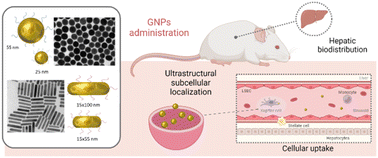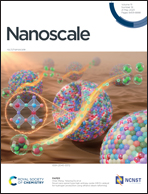Long-term retention of gold nanoparticles in the liver is not affected by their physicochemical characteristics†
Abstract
Gold nanoparticles (GNPs) are considered promising candidates for healthcare applications, however, their toxicity after long-term exposure to the material remains uncertain. Since the liver is the main filter organ for nanomaterials, this work was aimed at evaluating hepatic accumulation, internalisation and overall safety of well-characterised and endotoxin-free GNPs in healthy mice from 15 minutes to 7 weeks after a single administration. Our data demonstrate that GNPs were rapidly segregated into lysosomes of endothelial cells (LSEC) or Kupffer cells regardless of coating or shape but with different kinetics. Despite the long-lasting accumulation in tissues, the safety of GNPs was confirmed by liver enzymatic levels, as they were rapidly eliminated from the blood circulation and accumulated in the liver without inducing hepatic toxicity. Our results demonstrate that GNPs have a safe and biocompatibile profile despite their long-term accumulation.



 Please wait while we load your content...
Please wait while we load your content...